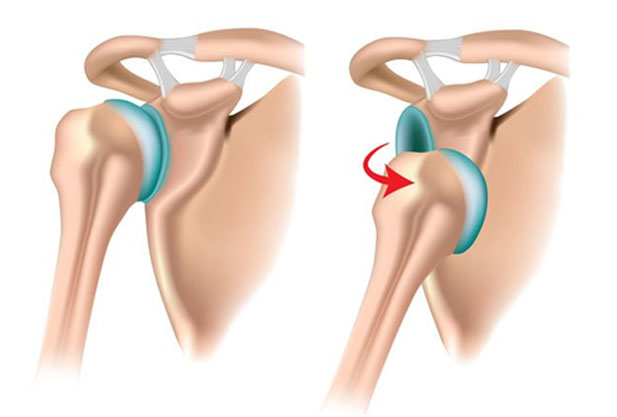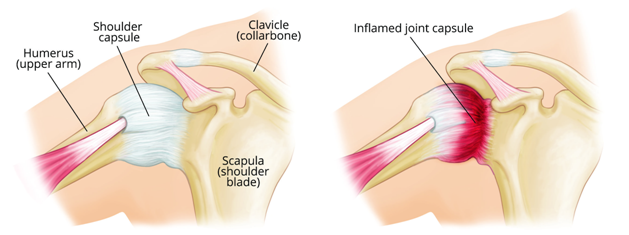Written by Dr Gowreeson Thevendran, MBChB (Bristol), MRCS.Ed, Dip. Sports Med.Ed, FRCS.Ed (Trauma & Ortho. ), FAMS (Singapore)
What is Shoulder Pain?
The shoulder comprises several joints supported by muscles and tendons that make it possible for a wide range of motion. However, due to the complex structure of the shoulder, it is susceptible to various types of pain and issues.
In most cases, shoulder pain may arise from the rotator cuff, a group of muscles that stabilise the shoulder joint. The pain may result from the following:
- Tendinitis: Irritation or damage to the rotator cuff.
- Bursitis: Inflammation and swelling of the bursa, which is a lubricating sac between the rotator cuff and the top shoulder bone.
- Impingement: Irritation and pain caused by friction between the top shoulder bone and the tendon and bursa.
- Rotator Cuff Tear: Pain and swelling in the front of the shoulder.
Managing shoulder pain may vary from non-invasive OTC pain relief to surgical interventions, depending on the severity of the condition. An orthopaedic surgeon will be able to recommend various treatment options based on your current condition and symptoms.
Symptoms of Shoulder Pain
Shoulder pain can cause swelling and tenderness on the front of the shoulder. Initial symptoms might include:
- Sudden pain when lifting or lowering your arm
- Minor pain when doing activities and at rest
- Pain radiating from the front of the shoulder to the side of the arm
As the condition progresses, you may experience:
- Decrease in strength
- Inability to move the affected arm
- Difficulty in performing specific motions
- Discomfort at night
It is advisable to seek professional evaluation should these symptoms persist or worsen.
Diagnosing Shoulder Pain
The diagnosis typically begins with a range of assessments, which may include a physical examination (to assess the range of motion, strength, and stability of the shoulder joint), a review of medical history, activities, and any previous injuries or conditions that may contribute to the pain.
Diagnostic imaging, such as X-rays, ultrasound, or MRI scans, may also be used to help identify the underlying cause of your pain, such as a rotator cuff tear or tendinitis.
Non-surgical Shoulder Pain Treatment
In general, the treatment options for shoulder pain include:
- Rest: To ensure optimal rest, you will be advised to avoid activities that may worsen the pain.
- Heat or Ice Therapy: To help reduce inflammation.
- Physical Therapy: To help improve flexibility, strength, and range of motion in the shoulder joint.
- Medications: To help manage the pain and swelling.
- Surgery: In severe cases, surgery may be recommended to help repair or reconstruct damaged tendons or other structures in the shoulder joint.
Shoulder Pain Surgery
When shoulder pain persists despite non-surgical interventions, the specialist may recommend the following treatment based on your condition and needs:
- Arthroscopic Surgery: This minimally invasive method involves making small incisions to insert a camera and specialised tools into the shoulder joint. It is often recommended for rotator cuff repairs, removal of inflamed tissue, or release of tight ligaments.
- Open Surgery: For more complex conditions, such as large or complex rotator cuff tears, open surgery may be necessary. This involves a larger incision to directly access and repair the shoulder structures.
- Shoulder Replacement: In cases of severe arthritis or massive irreparable rotator cuff tears, shoulder replacement surgery might be recommended. This involves replacing the damaged parts of the shoulder joint with artificial components.
Recovery Period for Shoulder Pain Surgery
The recovery period may vary based on the severity of the injury, the type of surgery performed, and your overall health. With proper treatment and care, minor injuries may heal within four weeks. Moderate injuries may take about six to eight weeks, while for severe injuries, healing may take up to six months to a year. If the shoulder pain is a result of an injury during sports activities, it is advisable to see a sports injury doctor in Singapore.

Dr Gowreeson Thevendran
MBChB (Bristol), MRCS.Ed, Dip. Sports Med.Ed, FRCS.Ed ( Trauma & Ortho. ), FAMS (Singapore)
Dr Gowreeson Thevendran is an orthopaedic surgeon in Singapore who specialises in lower limb orthopaedic conditions, trauma, and fracture surgeries of both the upper and lower limbs. He received his medical education from the University of Bristol and completed his surgical training in the UK and Canada. Before establishing his private practice, he served as Chief of Foot & Ankle Surgery, Department of Orthopaedics at Tan Tock Seng Hospital, Singapore.
Languages Spoken:
- English, Malay, Tamil
COMMON ORTHOPAEDIC CONDITIONS WE TREAT
GENERAL
Frequently Asked Questions About Shoulder Pain Treatment in Singapore
Related posts
Clinic Location
OrthofootMD@Novena
- Mount Elizabeth Novena
38 Irrawaddy Road #05-42 Mount Elizabeth Novena Specialist Centre Singapore 329563
OrthofootMD@Mount Alvernia Hospital
- (Mount Alvernia Hospital)
820 Thomson Road #01-01/02 Mount Alvernia Medical Centre A Singapore 574623
Dr Gowreeson Thevendran is currently an orthopaedic surgeon with Island Orthopaedic, a one-stop care centre for orthopaedic health under Healthway Medical Group. He specialises in treating lower limb orthopaedic conditions, as well as trauma and fracture surgery of both the upper and lower limbs. Prior to establishing his private practice, Dr Gowreeson was Chief of Foot & Ankle Surgery at the Department of Orthopaedics at Tan Tock Seng Hospital (TTSH). Today, he continues to serve the Orthopaedic Department at TTSH as a visiting consultant.


